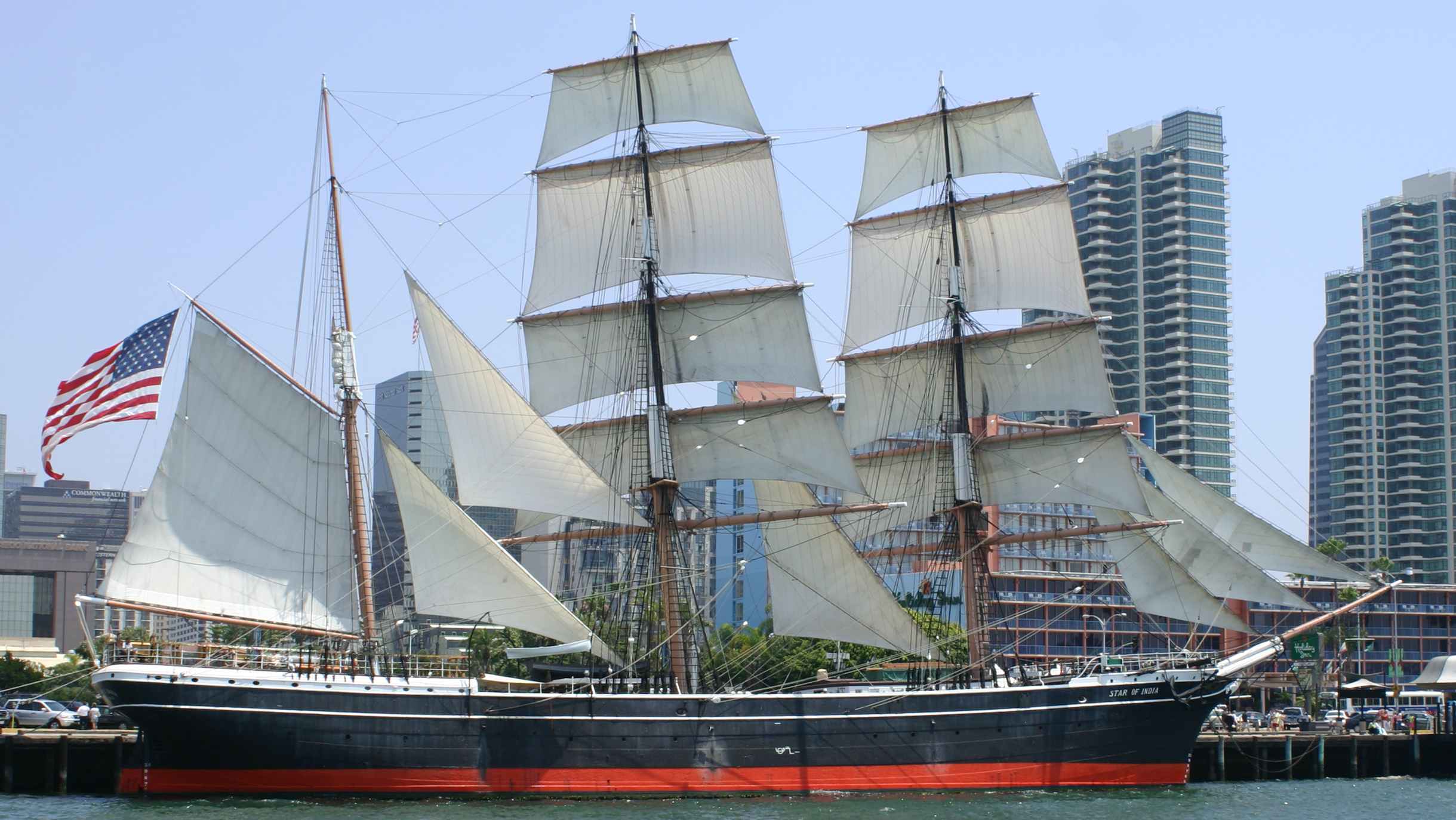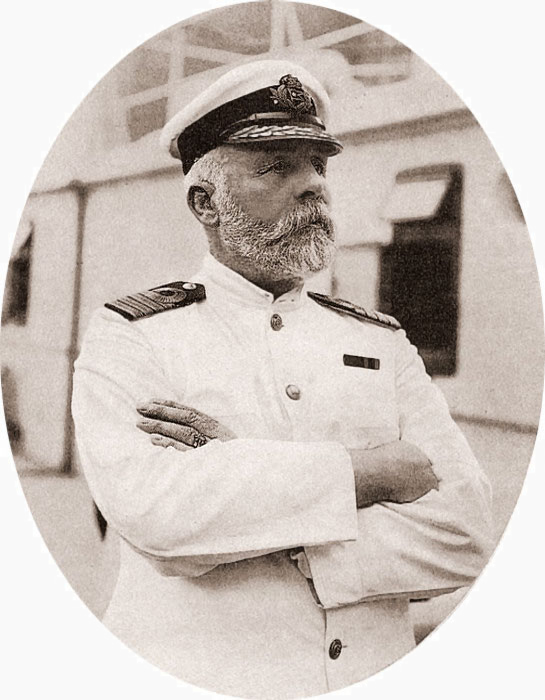|
St Vincent (clipper Ship)
''St Vincent'' was a three-masted sailing ship that was built in England in 1865, renamed ''Axel'' in 1894 and scrapped in 1907. For the first part of her career she was a clipper, trading between London and Adelaide. She was later re-rigged as a barque, and spent the final part of her career she was under Norwegian ownership. Building Pile, Hay & Co of Sunderland built ''St Vincent'' in 1865, launching her on 22 July and completing her that September. She was of composite construction (iron frame and timber planking). Her registered length was , her breadth was , her depth was and her tonnage was . As built, she was a full-rigged ship. Her first owner was Devitt and Moore's Adelaide Line, who registered her in London. Her United Kingdom official number was 52770 and her code letters were HDRK. Career On her maiden voyage she left Plymouth 14 September 1865, with Captain Alexander Louttit, formerly of the ''Sea Star'', as her Master.Louttit was an early magic lantern proj ... [...More Info...] [...Related Items...] OR: [Wikipedia] [Google] [Baidu] |
Devitt And Moore
Devitt and Moore was a British shipping company formed by Thomas Henry Devitt and Joseph Moore in 1836. They became shipowners and entered the passenger and cargo trade to Australia managing and owning many clipper ships such as the ''City of Adelaide'' and the ''South Australian''. With the advent of steam, they developed a training scheme for cadets and formed Pangbourne College. Devitt and Moore fleet In purchasing their first two full-rigged ships from Duncan Dunbar in 1863, Devitt and Moore started their long connection with Australia as shipowners. Over the next fifty-five years until the end of the First World War when they finally conceded to the competition from steamships, at various times the Devitt and Moore fleet comprised twenty-nine square-rigged sailing ships and two steamships carrying passengers, wool, copper and general cargo between Great Britain and Australia. Thomas Henry Devitt's grandson Howson Foulger Devitt went on to establish the insurance broker De ... [...More Info...] [...Related Items...] OR: [Wikipedia] [Google] [Baidu] |
Full-rigged Ship
A full-rigged ship or fully rigged ship is a sailing vessel's sail plan with three or more masts, all of them square-rigged. A full-rigged ship is said to have a ship rig or be ship-rigged. Such vessels also have each mast stepped in three segments: lower mast, top mast, and topgallant mast. Other large, multi-masted sailing vessels may be regarded as ships while lacking one of the elements of a full-rigged ship, e.g. having one or more masts support only a fore-and-aft sail or having a mast that only has two segments. Masts The masts of a full-rigged ship, from bow to stern, are: * Foremast, which is the second tallest mast * Mainmast, the tallest * Mizzenmast, the third tallest * Jiggermast, which may not be present but will be fourth tallest if so If the masts are of wood, each mast is in three or more pieces. They are (in order, from bottom up): * The lowest piece is called the ''mast'' or the ''lower''. * Topmast * Topgallant mast * Royal mast, if fitted On steel-m ... [...More Info...] [...Related Items...] OR: [Wikipedia] [Google] [Baidu] |
Full-rigged Ships
A full-rigged ship or fully rigged ship is a sailing vessel's sail plan with three or more masts, all of them square-rigged. A full-rigged ship is said to have a ship rig or be ship-rigged. Such vessels also have each mast stepped in three segments: lower mast, top mast, and topgallant mast. Other large, multi-masted sailing vessels may be regarded as ships while lacking one of the elements of a full-rigged ship, e.g. having one or more masts support only a fore-and-aft sail or having a mast that only has two segments. Masts The masts of a full-rigged ship, from bow to stern, are: * Foremast, which is the second tallest mast * Mainmast, the tallest * Mizzenmast, the third tallest * Jiggermast, which may not be present but will be fourth tallest if so If the masts are of wood, each mast is in three or more pieces. They are (in order, from bottom up): * The lowest piece is called the ''mast'' or the ''lower''. * Topmast * Topgallant mast * Royal mast, if fitted On steel-mas ... [...More Info...] [...Related Items...] OR: [Wikipedia] [Google] [Baidu] |
1865 Ships
Events January–March * January 4 – The New York Stock Exchange opens its first permanent headquarters at 10-12 Broad near Wall Street, in New York City. * January 13 – American Civil War : Second Battle of Fort Fisher: United States forces launch a major amphibious assault against the last seaport held by the Confederates, Fort Fisher, North Carolina. * January 15 – American Civil War: United States forces capture Fort Fisher. * January 31 ** The Thirteenth Amendment to the United States Constitution (conditional prohibition of slavery and involuntary servitude) passes narrowly, in the House of Representatives. ** American Civil War: Confederate General Robert E. Lee becomes general-in-chief. * February ** American Civil War: Columbia, South Carolina burns, as Confederate forces flee from advancing Union forces. * February 3 – American Civil War : Hampton Roads Conference: Union and Confederate leaders discuss peace terms. * Feb ... [...More Info...] [...Related Items...] OR: [Wikipedia] [Google] [Baidu] |
Dunkerque
Dunkirk (french: Dunkerque ; vls, label=French Flemish, Duunkerke; nl, Duinkerke(n) ; , ;) is a commune in the department of Nord in northern France.Commune de Dunkerque (59183) INSEE It lies from the border. It has the third-largest French harbour. The population of the commune in 2019 was 86,279. Etymology and language use The name of Dunkirk derives from '' or ' |
Sail Plan
A sail plan is a description of the specific ways that a sailing craft is rigged. Also, the term "sail plan" is a graphic depiction of the arrangement of the sails for a given sailing craft.> In the English language, ships were usually described, until the end of the eighteenth century, in terms of their type of hull design. Using the type of rig as the main type identifer for a vessel only became common in the nineteenth century. This is illustrated by the terminology for ships in the large fleet of colliers that traded to London from the coal ports of the Northeast of England (of which was a well-known example). Many of these full-rigged ships (square rigged on all of three masts) had the hull type "bark"another common classification was "cat". In the second half of the eighteenth century, the square sails on the mizzen were often eliminated. The resulting rig acquired the name of the hull type: initially as "bark" and soon as "barque". This explains the Royal Navy's descripti ... [...More Info...] [...Related Items...] OR: [Wikipedia] [Google] [Baidu] |
White's Rooms
White's Rooms, later known as Adelaide Assembly Room, was a privately-owned function centre which opened in 1856 on King William Street, Adelaide, South Australia. It became Garner's Theatre in 1880, then passed through several hands, being known as the Tivoli theatre, Bijou Theatre, Star Picture Theatre and finally in 1916 the Majestic Theatre and Majestic Hotel. History George White (1813 – 12 November 1876) was a Gloucestershire tailor who emigrated with his family to South Australia on the ''Royal Admiral'', arriving in Adelaide in January 1838. He set up a tailoring business in Hindley Street, then took up a position with William Pearce in Rundle Street. Pearce quit the business in May 1843, and White purchased much of his stock, and around 1852 moved to larger premises in King William Street (which later became the public bar of the Clarence Hotel). His Assembly Rooms were opened on 26 June 1856 with a Grand Masonic Ball, and were for many years the only place of public ... [...More Info...] [...Related Items...] OR: [Wikipedia] [Google] [Baidu] |
Magic Lantern
The magic lantern, also known by its Latin name , is an early type of image projector that used pictures—paintings, prints, or photographs—on transparent plates (usually made of glass), one or more lenses, and a light source. Because a single lens inverts an image projected through it (as in the phenomenon which inverts the image of a camera obscura), slides were inserted upside down in the magic lantern, rendering the projected image correctly oriented. It was mostly developed in the 17th century and commonly used for entertainment purposes. It was increasingly used for education during the 19th century. Since the late 19th century, smaller versions were also mass-produced as toys. The magic lantern was in wide use from the 18th century until the mid-20th century when it was superseded by a compact version that could hold many 35 mm photographic slides: the slide projector. Technology Apparatus The magic lantern used a concave mirror behind a light source to direct ... [...More Info...] [...Related Items...] OR: [Wikipedia] [Google] [Baidu] |
Master Mariner
A master mariner is a licensed mariner who holds the highest grade of seafarer qualification; namely, an unlimited master's license. Such a license is labelled ''unlimited'' because it has no limits on the tonnage, power, or geographic location of the vessel that the holder of the license is allowed to serve upon. A master mariner would therefore be allowed to serve as the master of a merchant ship of any size, of any type, operating anywhere in the world, and it reflects the highest level of professional qualification amongst mariners and deck officers. The term ''master mariner'' has been in use at least since the 13th century, reflecting the fact that in guild or livery company terms, such a person was a master craftsman in this specific profession (e.g., master carpenter, master blacksmith). Norway In Norway, the title of Master mariner ''(Sjøkaptein)'' is a protected title to which holders of a license as deck officer class 1 in accordance with the "Regulations on qualifica ... [...More Info...] [...Related Items...] OR: [Wikipedia] [Google] [Baidu] |
Sea Captain
A sea captain, ship's captain, captain, master, or shipmaster, is a high-grade licensed mariner who holds ultimate command and responsibility of a merchant vessel.Aragon and Messner, 2001, p.3. The captain is responsible for the safe and efficient operation of the ship, including its seaworthiness, safety and security, cargo operations, navigation, crew management, and legal compliance, and for the persons and cargo on board. Duties and functions The captain ensures that the ship complies with local and international laws and complies also with company and flag state policies. The captain is ultimately responsible, under the law, for aspects of operation such as the safe navigation of the ship,Aragon and Messner, 2001, p.4. its cleanliness and seaworthiness,Aragon and Messner, 2001, p.5. safe handling of all cargo,Aragon and Messner, 2001, p.7. management of all personnel,Aragon and Messner, 2001, p.7-11. inventory of ship's cash and stores,Aragon and Messner, 2001, p.11-12. an ... [...More Info...] [...Related Items...] OR: [Wikipedia] [Google] [Baidu] |
Plymouth
Plymouth () is a port city and unitary authority in South West England. It is located on the south coast of Devon, approximately south-west of Exeter and south-west of London. It is bordered by Cornwall to the west and south-west. Plymouth's early history extends to the Bronze Age when a first settlement emerged at Mount Batten. This settlement continued as a trading post for the Roman Empire, until it was surpassed by the more prosperous village of Sutton founded in the ninth century, now called Plymouth. In 1588, an English fleet based in Plymouth intercepted and defeated the Spanish Armada. In 1620, the Pilgrim Fathers departed Plymouth for the New World and established Plymouth Colony, the second English settlement in what is now the United States of America. During the English Civil War, the town was held by the Roundhead, Parliamentarians and was besieged between 1642 and 1646. Throughout the Industrial Revolution, Plymouth grew as a commercial shipping port, handling ... [...More Info...] [...Related Items...] OR: [Wikipedia] [Google] [Baidu] |







